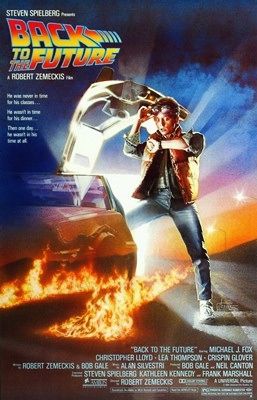Only a few weeks ago many of us at the forefront of analysing, influencing and telling the story of the amazing technological changes that make up the “Fourth Industrial Revolution” would be explaining that we are living in one of the most exhilarating times in human history. We might even have joked using the Chinese proverb, or is it a curse, “May you live in interesting times”. In the course of those few weeks things got very interesting. The dramatic spread of COVID-19 has disrupted lives, livelihoods, communities and businesses worldwide. Even with all of the knowledge most of us had at the start of March, did many of us imagine we would be where we are today, as I write this “locked down” in my home on the last day of March 2020? The most significant part of the problem is that we humans have 200,000 years of evolutionary circumstances and thinking that happened in a linear way. Our minds have been conditioned to changes in speed, growth, the climate and our environment in easily digestible steps. We think in terms of steps, not step change, but to survive in this new world we need to think differently.
Technological change has always been a numbers game, and the numbers are big. If we talk about a minute on the Internet BC (before COVID-19) then across the world 4,497,200 Google searches were conducted, 18,100,000 texts were sent, 55,100 photos were shared on Instagram, 188,000,000 emails were sent, 231,800 Skype calls were made, and for that minute 4,500,000 people were watching videos on YouTube. That only covers a few of the world’s social media and technology platforms, and those numbers will all have changed significantly in the last Month as so many of us have shifted from face to face meetings and working, to working from home or in isolation at home wanting to connect with family. Some of us are using online collaboration tools, communication mechanisms and certain social networks for the first time. As hunter gatherers or farmers as well as feeling ourselves age, or watching a single animal or tree grow, we’ve been used to looking at a massive herd, or a deep forest, or the size of an ocean – we can deal with big numbers too.

Where our conditioning gets in the way is grappling with exponential change. I’ve heard this explained with lilies growing to fill a pond, or with the fable of the origins of chess and grains of rice on the board. I’ll use a passage lifted out of the book Abundance, The Future Is Better Than You Think by Peter H. Diamandis and Steven Kotler:
To give you a sense of the difference, if I take thirty linear steps (calling one step a meter) from the front door of my Santa Monica home, I end up thirty meters away. However, if I take thirty exponential steps (one, two, four, eight, sixteen, thirty- two, and so on), I end up a billion meters away, or, effectively lapping the globe twenty-six times.”
Let me just amplify the magnitude of difficulty here. After seven exponential “steps”, that’s a quarter of the “steps”, you’d only be 127 meters away, but when you get to that last exponential “step” it would take you 13 times around the globe. The problem with exponential versus linear is that nothing much happens for a while, then you reach a cusp, and then the rate of change is massive. Easy to visualise as a graph, but much more difficult to get your head around in human terms. A virus that first infected someone aged 55 in Hubei province, China on 17 November 2019, that can generally infect two or three people once you’ve got it, is now teaching us all about the power of exponential change. As long ago as 2015 the likes of Bill Gates warned us of the danger of such a pandemic. What should we have done?
My answer is that we need to learn and think differently. We need to shift from a linear perspective to thinking exponentially. We call it Mutable Thinking.
Those of us in the “digital transformation” business have been learning from the military and talking VUCA for a while. Nobody will argue against the volatility, uncertainty, complexity and ambiguity that we all face now. Let’s explore some of those ingredients. As we’ve advanced through the industrial revolutions to this fourth one, our business world has steadily moved through levels of complicated, but now it’s complex. What’s the difference? Complicated can be controlled. Complicated might be difficult, but there are a set of rules to be to be understood – instructions, recipes, and algorithms all ripe for the application of machine learning and AI. There are linear pathways that allow us to identify individual causes for observed effects. Complicated can be controlled with a mindset of efficiency. We can reduce the problem to steps, and with enough computing power and the right data we can make solid predictions, improve the process or even solve the problem completely. Complex is different. Complex problems involve too many unknowns, and too many variables and interrelated factors to be reduced to a set of rules and processes. Complex means patterns that don’t repeat themselves regularly. Complex defies forecasting and brings in the unexpected with radical uncertainty. Complex needs to be managed in a different way. Complex needs a different mindset.
In today’s VUCA landscape we believe that successful organisations need to be a Mutable Business™, meaning that they can successfully transform in a continuous way. You can find out more about the business, people and technology ingredients that make up our recommended approach, but let’s discuss the need for a different mindset to support it. You need exponential thinking in place of linear thinking, a different kind of leadership, and a different kind of culture – we call it Mutable Thinking. We see today’s successful leaders have a different set of characteristics and values that they encourage at all levels of their organisation:
- Unlimited mindset
- Strong team cohesion
- Unbounded culture
- Inspirational leadership
- Strong sense of purpose
- Passion in what they are doing
With complicated shifting to complex, the planning horizon is dramatically reduced and predicting the future is impossible. If it’s uncharted, that means you can only map it when you get there. As a Mutable Thinker you embrace the fact you can’t plan for an unknown future, but you know that you can be prepared for it. We can beat 200,000 years of evolutionary conditioning on linear thinking because of the other key factor that Darwin taught us. The species that survives is the one that’s most adaptable to the new conditions. In this uncharted future, what are the characteristics that will help us? We need to:
- Expect the unexpected and prepare for many possibilities
- Think in a “team of teams” way, forming partnerships, building coalitions, looking for ecosystems that can help, both inside and outside the organisation
- Use our imagination – it is combining new ideas, fostering innovation and finding the right new things to do that are much more important than efficiency and doing the old things right
- Allow experimentation, allow our people to fail and learn from the process
- Be brave and stand for something
Over the last week we’ve heard some amazing and positive news stories to set against the bad news of the global pandemic and the readjustment of the world economy that will come. In the UK 700,000 people volunteering to help the NHS in a matter of a few days. Acts of community encouraging the nation to collectively thank the NHS front line staff a few days ago or helping the most at risk get deliveries of the food and medicine they need. The development of a Continuous Positive Airway Pressure (CPAP) breathing aid that can help keep COVID-19 patients avoid intensive care, adapted by mechanical engineers at UCL, clinicians at UCLH working with Mercedes-AMG F1 engineers to create a state-of-the-art version suited to mass production and approved by NHS in less than two weeks. Kings College London launching a new app on 24 March which maps and tracks symptoms related to COVID-19, allowing anyone to self-report daily, that already has one 1.5 million users and counting, giving us fresh data and insights to help combat the disease. All of this thinking signposts the different mindset that all of us should be considering in making our businesses more successful going forwards. We need to shift from Linear Thinking to Mutable Thinking.
This post was first published at Bloor Research. Agile Elephant is a strategic partner of Bloor Research. To find out more, please contact us.



